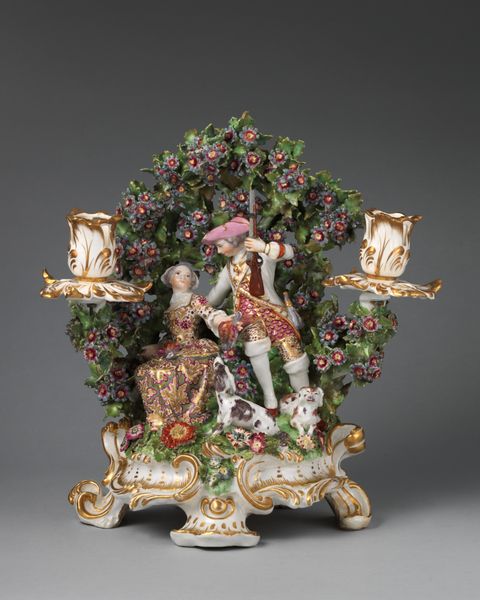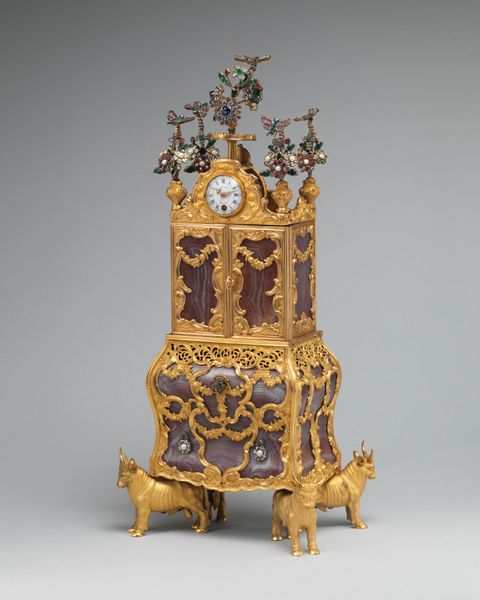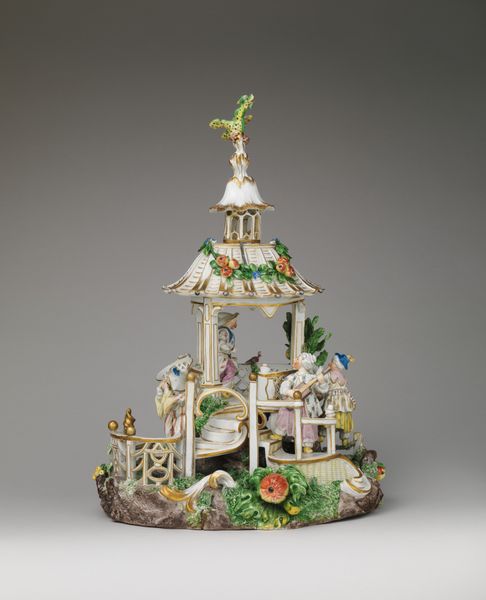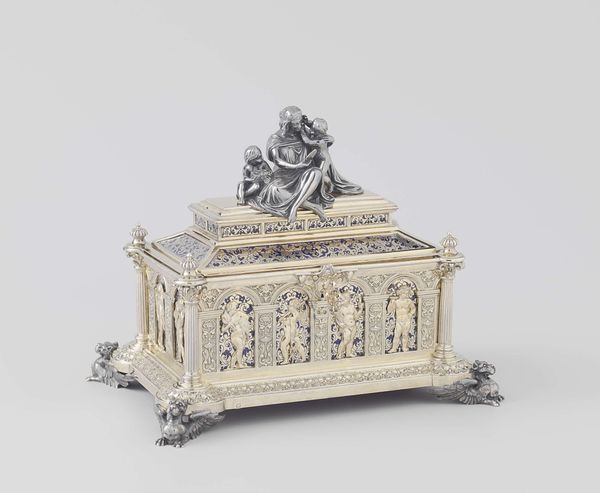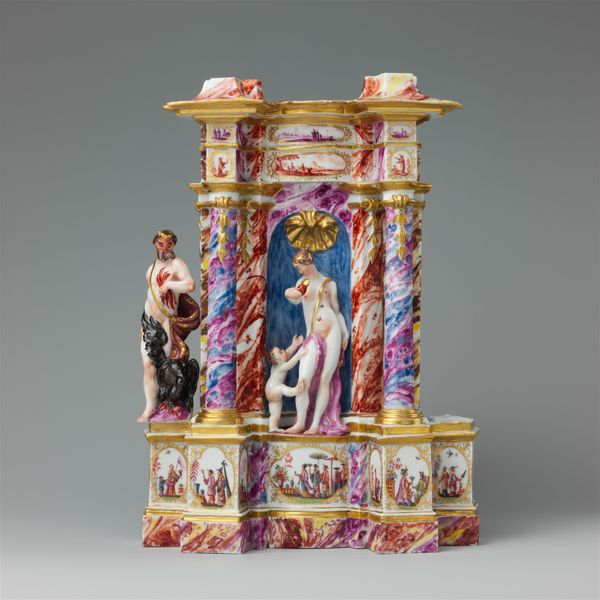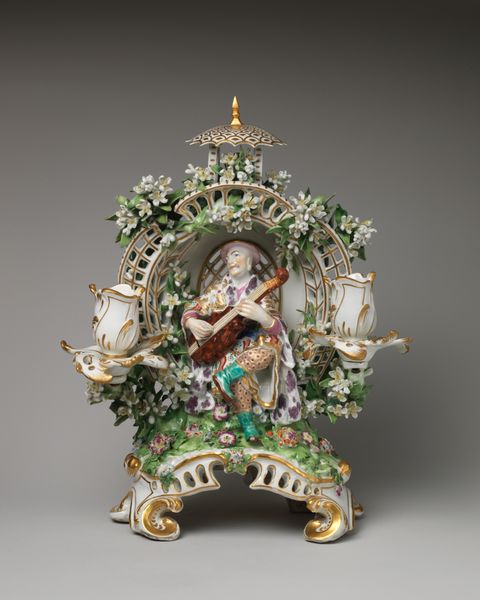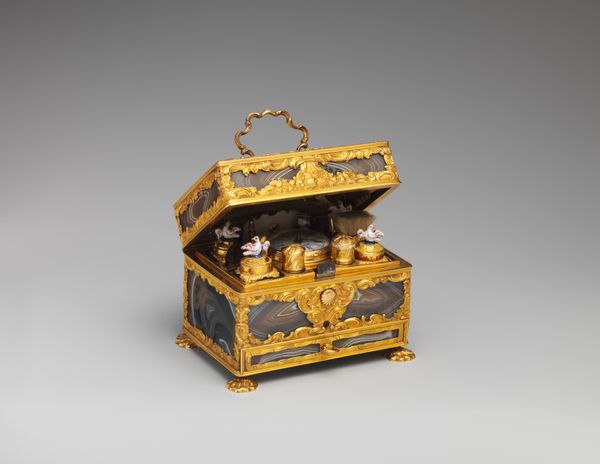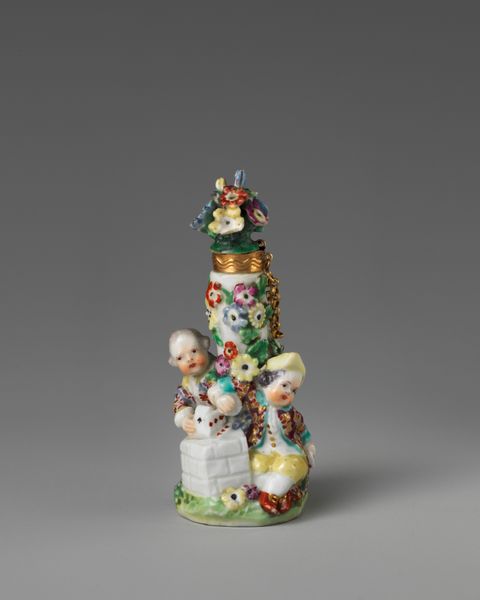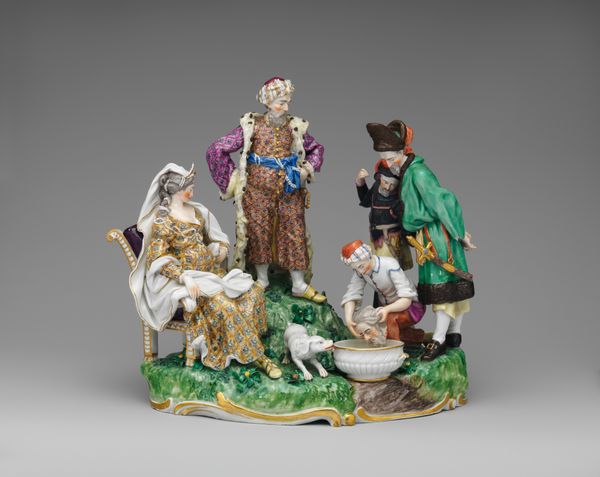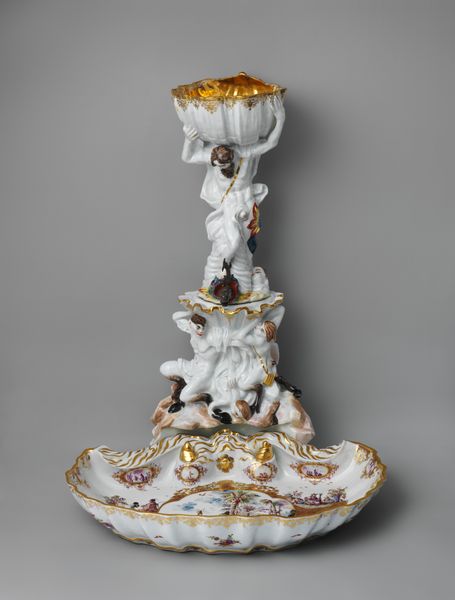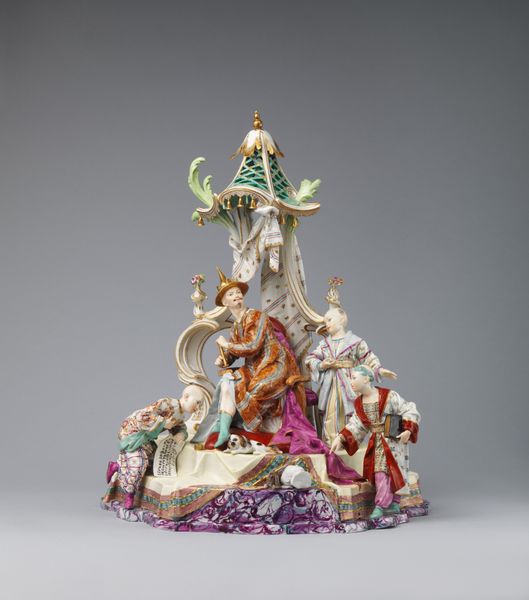
ceramic, sculpture
#
sculpture
#
ceramic
#
mannerism
#
figuration
#
sculpture
#
decorative-art
Dimensions: Overall: 19 × 20 1/2 × 14 7/8 in. (48.3 × 52.1 × 37.8 cm)
Copyright: Public Domain
Curator: Oh, my, what an extraordinary piece. It feels like a Baroque opera exploded onto a tabletop! So vibrant and…intense. Editor: Indeed! What we have here is an inkstand crafted by the Patanazzi family around 1584. Currently residing at the Metropolitan Museum of Art, this ceramic sculpture depicts Apollo and the Muses. It's an excellent example of Mannerist style. Curator: Mannerist, definitely. All that ornamentation. The figures are almost overwhelming. I'm curious about the physicality of its creation – imagining the meticulous labor of shaping, firing, and painting each figure and detail on this inkstand. Were such objects considered functional or purely decorative in their time? Editor: Good question. They certainly blurred the lines, serving a practical purpose while broadcasting the owner's refined taste and access to skilled artisans. The Patanazzi family would have relied on a workshop model, and this piece speaks volumes about their access to wealthy clientele and their ambition. How was their status perceived? Curator: Given its mythological subject and intricate detailing, the piece had value as social currency within educated, aristocratic circles. Displaying knowledge of classical antiquity and artistic patronage enhanced a family's prestige and power within society. The placement in home likely further enhanced and communicated the values the owner had at that time. Editor: Absolutely. And notice how Apollo and the Muses, traditionally associated with inspiration and the arts, transform the act of writing itself. Writing isn’t just scribbling; it’s a connection to the divine. It creates its value as a form of elevated skill and intellect through these connections. Curator: Thinking about its functionality within social and institutional constructs adds depth to it. This inkstand transforms into an object loaded with meanings tied to knowledge, power, and taste. Editor: Precisely. By approaching it from the perspectives of those that produced it to what it meant for those who possessed it, the impact can truly be better understood. Curator: Looking again, I appreciate this beautiful art and how much deeper a piece of decorative art, even a seemingly simple inkstand, has potential when placed in its context of labor and symbolic value. Editor: A powerful reminder that art history's value, I'm discovering is when it offers us these windows into society through materiality.
Comments
No comments
Be the first to comment and join the conversation on the ultimate creative platform.

